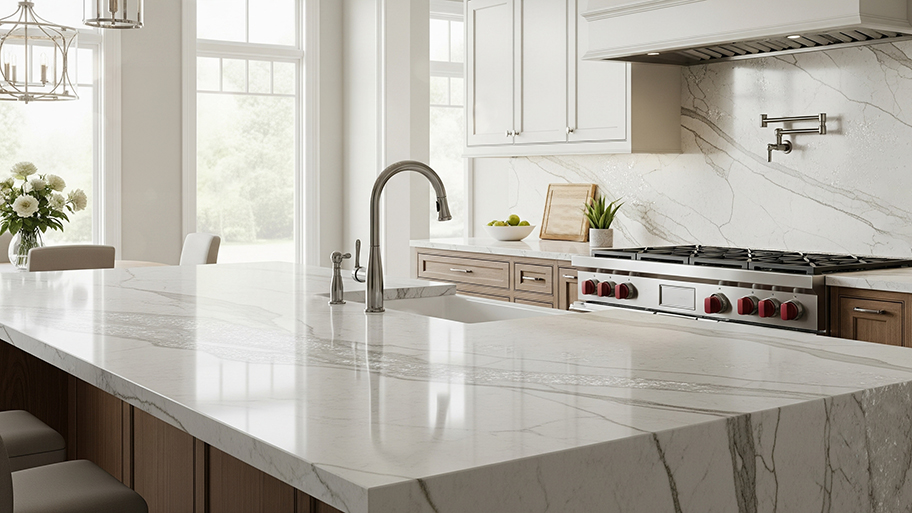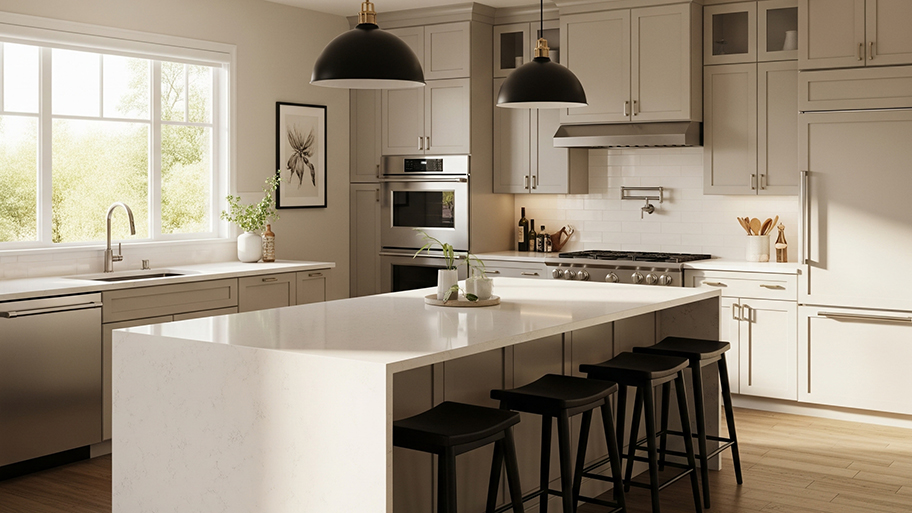
How much your quartzite countertops will cost depends on a number of factors—most prominently, the type of quartzite and the size of your counters.
Don’t let your countertops seam disjointed


Granite countertops can give any kitchen a classic, high-end look. However, if you need to join two slabs of granite around a corner or install more than one slab to fill a larger area, you’ll have to deal with seams. Seams in granite countertops can be unavoidable, but that doesn’t mean they need to be the visual centerpiece of your kitchen. This guide will explain how to avoid seams in granite countertops for a clean transition.
Granite countertop slabs are usually 9 to 10 feet long and 5 to 6 feet wide. In many kitchens, this size slab will cover the entire island; however, if your slabs are smaller than your island dimensions, you’ll inevitably end up with seams.
Plan to join the slabs in inconspicuous areas, like in a cutout for a sink or range top, so the seam is less obvious. Join similar slabs so the design and pattern flow together, and the seams stand out less. Finally, check that your countertop installer knows how to cut granite properly to minimize seams.

Whichever method you use to hide the seams in your granite countertops, it’s essential to color-match it to the surface—and to consider your kitchen cabinet colors. Finding caulk, resin, or epoxy in a matching hue shouldn’t be too difficult if your granite countertops are solid-colored. However, if your granite countertops are intricately patterned, you’ll have a harder time and will want to leave the repair to a professional who is experienced at working with stone countertops.
One way to make your seam disappear is to fill it with a caulk that matches the color of your countertops. This method works best for seams that are 1/16-inch or less. Don’t use a run-of-the-mill caulk found at your local hardware store; instead, buy a silicone caulk designed for granite use. If you can’t find any locally, a stone countertop installation pro near you can help.
You can also erase visible countertop seams using epoxy, resin, or potentially countertop paint. Like caulk, epoxy and resin are best used on seams that measure 1/16-inch or less. If your granite is highly patterned and you can’t find the right color epoxy or resin to hide the seams, call a pro to help.

If your budget doesn’t allow you to have granite countertops throughout your kitchen, consider mixing and matching countertop materials. For example, you could install a wood panel in the middle of your kitchen island rather than having a seam between granite slabs partway through. Alternatively, you could use granite on three-quarters of the countertop and install a wooden waterfall edge to add interest to the surface. Both options can save you money and prevent granite seams while creating a one-of-a-kind kitchen countertop design.
Expect to pay between $1.25 and $4 per linear foot to apply color-matching silicone caulk along a granite countertop seam. The cost may vary if you opt for epoxy or resin instead of caulk. However, the costs are negligible compared to installing new granite countertops. If the seams can’t be repaired and your countertops are several decades old, you’ll pay $2,000 to $4,000 in new granite countertop costs.
Hiding granite countertop seams can be a DIY-friendly project—as long as the seams are fairly even. However, if the countertops were installed poorly and the seams are prominent in your kitchen, it’s better to call a pro to handle the repair. Professional countertop repair pros have experience hiding seams in granite and can do the job quickly and efficiently.
From average costs to expert advice, get all the answers you need to get your job done.

How much your quartzite countertops will cost depends on a number of factors—most prominently, the type of quartzite and the size of your counters.

Marble backsplashes are beautiful and costly additions to your kitchen. Our guide lays out marble options and the labor required to install it.

New quartz countertops can give any kitchen a facelift. Find out quartz countertop costs, including quartz slab prices and the cost of installation.

When fabricators cut a slab, they leave leftover pieces sold as granite remnants. Granite remnants can be perfect for small countertops and save you money.

Want to cook and dine in the lap of luxury? Consider these marble countertop pros and cons to learn if they are a good fit for you and your home.

Hate your granite counters? Learn how to change the color of your granite countertops to refresh your kitchen and get a whole new look.